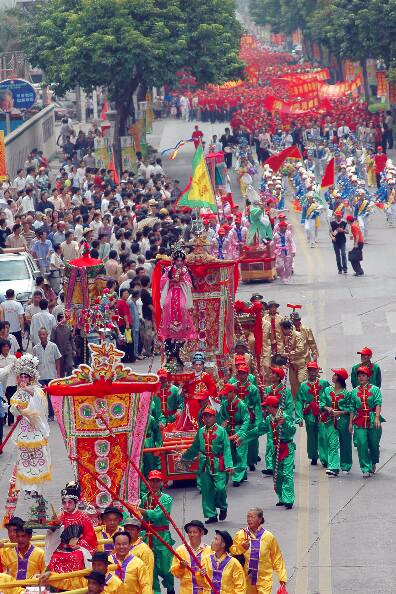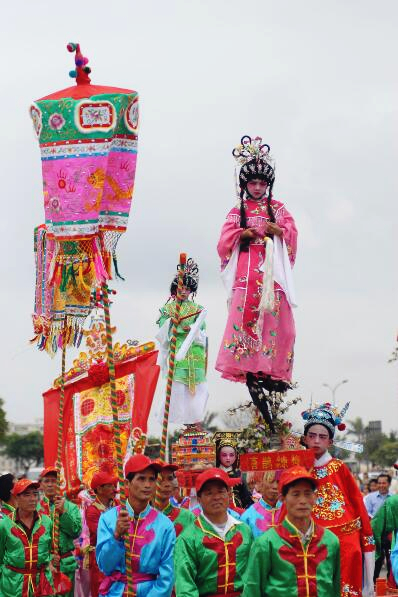Doumen Qianwu Piao’se Street Procession
Qianwu Piaose, which was designated a provincial intangible cultural heritage in 2007, dates back almost 400 years from Pengze County of Jiangxi Province in the Ming Dynasty (1368-1644). It evokes a strong festive atmosphere and creates striking visual appeal in terms of brightly colored costumes and props.
While Piaose is on parade, a Drum & Gong Cupboard between every two boards creates a dynamic combination of sound, posture, and performance.

One of the most established Piaose boards, Crab Crossing the River, is derived from the legend that the Eight Immortals matched magical powers with the Crab Demon while fighting in the East China Sea. The oldest in town, the 400-year-old board survived the Cultural Revolution because it had been locked away at the time.
The Piaose procession team is divided into different “boards.” Usually, three to four children act on one board. Each board is composed of three parts: the moving stage, also called Segui, cupboard; supporting steel sticks, known as Segeng; and the child actors above called “Yaose,” meaning “manipulative disguises,” impersonated by the same-aged girls weighing less than 20kg standing on boards. Among the children, those sitting at lower level are called “screen,” always played by 5- to 6-year-old boys.

The plays are always about legends and historical stories.







